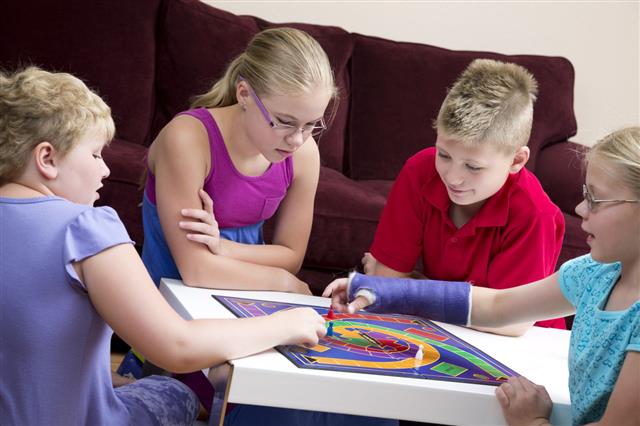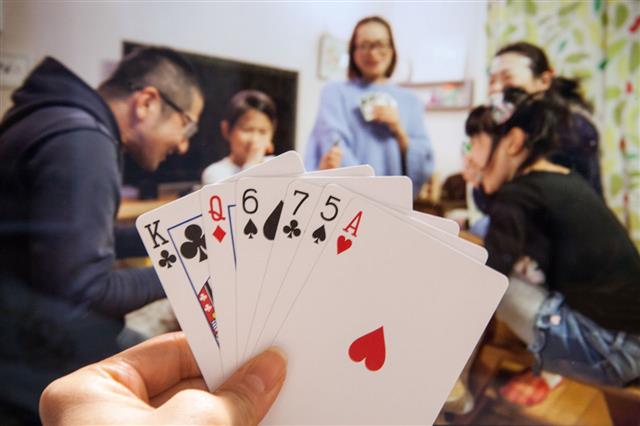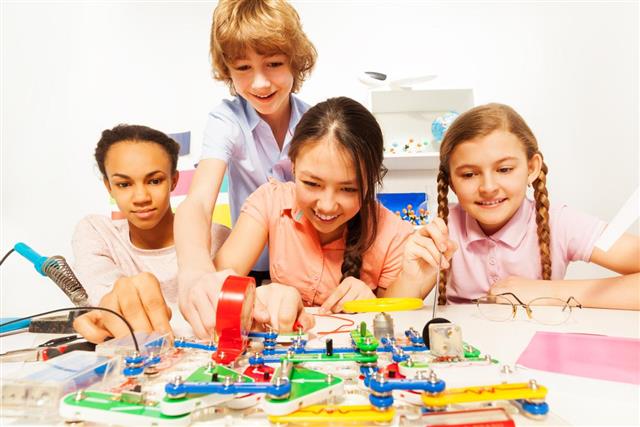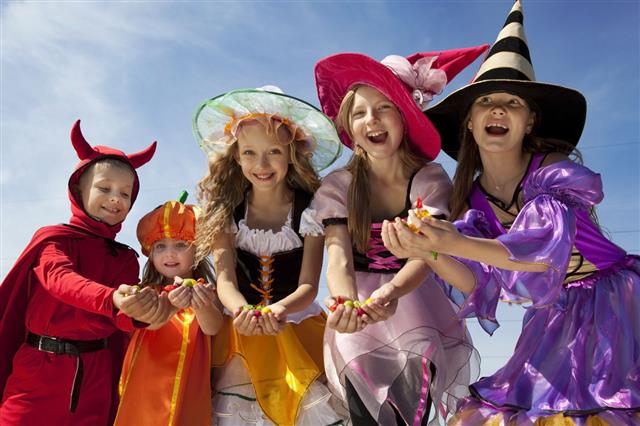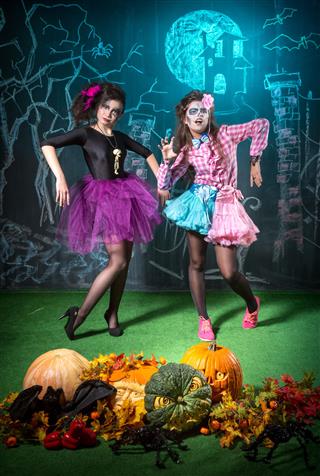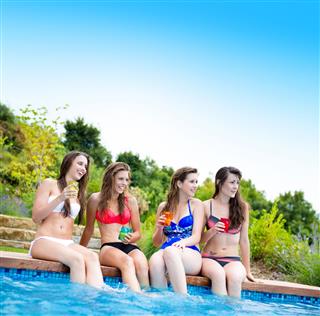
It is important for a high school teacher to create an affable atmosphere in their class, especially since they are dealing with teens. The only way to get students interested in the classroom activities is to herald an element of fun through icebreakers.
Besides creating an amiable atmosphere in a classroom situation, icebreakers are employed to soothe and ease the participants (here students). It is an activity that helps the students to interact with their peers and teachers at a personal level, rather than a formal interaction. It basically works as an aid/tool to help the teacher analyze the students entrusted to their care, thus making the teaching-learning process a little less complicated.
There are two types of icebreakers that can be employed to make the students feel comfortable in the new environment. While facilitating introductions help participants ease into their training module, topic lead-ins cater to identifying the needs and goals of the course/module.
Introductory icebreakers are help both, the teacher and the students get out enough primary information about one another to help them get comfortable. Topic lead-ins can be employed by the teacher to introduce the module in order to generate interest in the particular topic to be covered. The activities often involve word play like crosswords, word tree, etc., besides, the teacher can also conduct multiple choice tests and quizzes to get the class interested.
How many spots have you?
Things required: lipstick.
How to go about:To conduct this icebreaker, you need to get your students seated in a circle, get them to introduce themselves. The rule here is to ask everyone to pay attention to the names being called out. Once everyone has introduced themselves, ask them to repeat after you, “I have no spots on my face, how many have you?”
The rule for playing “How many spots have you?”
Every one has to repeat the sentence without fumbling, this has to be followed by another participants name.
Example: I have no spots on my face, how many have you, Isabelle?
Isabelle: I have no spots on my face how many have you ______(name of another person)?
Where’s the fun?:
The person who fumbles with the sentence gets a lipstick spot on his/her face.
What next:
The game continues with the person who has a spot on his/her face saying, “I have __ (the number of spots on the face) spot/s on my face, how many have you, ___?”. The game continues till you have someone with maximum number of spots on the face.
☀Even this game can be played by children in schools. You can replace the lipstick with paint and paint brush. They will have more fun in playing the game.
Animal Kingdom
Things required:Strips of paper and pens.
How to go about:Distribute the strips of paper to each student and ask them to jot down the name of an animal on it. Then collect the strips of paper, shuffle it and ask them to pick up a strip of paper each. At the word go, they have to find their partners or groups – as the case be – thus forming their own family.
Each animal has to be represented by an action and no one is allowed to speak a word.
Example: A bird will be shown by flapping the hands, while an elephant can be depicted by wrapping an arm around the nose while the other arm extends away from the nose thus forming a trunk.
Where’s the fun?:If you are in for a little bit of chaos, this is the perfect icebreaker, as each member tries to find his/her family.
What next: Once they have found their family, they ought to introduce themselves to each other. They then form a leader, who will introduce the members of the group to all the other groups that have formed.
☀Children in junior school can also play this game. They can have more fun while playing, as they can stick the chits on their forehead and then they can start representing the animal.
Name Chain
Things required: A basketball.
How to go about:Take your class and head outdoors. Ask your students to form a circle, and have a ball game. All you got to do is, pass the ball around and ask your students to introduce themselves.
The rule for playing “Name Chain”
The person passing the ball has to introduce themselves with an adjective starting with their initial alphabet. The person who gets the ball next has to introduce not just himself, but repeat the earlier persons description.
Example: Joyce starts the game she introduces herself as joyful Joyce, the next person has to repeat this description along with his/her name. Which means he/she ends up saying, joyful Joyce, tiny Tom, and so on.
Where’s the fun?:The sequence has to be followed, which means they have to pay close attention to what is being said.
What next:The game continues till everyone has had their share of fumbling and recalling the names of all the others.
☀Children in junior high school can play this icebreaker game. Children can also play this game outdoors.
Mingle! Mingle!
Things required: Strips of paper and pens/pencils.
How to go about:Start by distributing the strips of paper and ask everyone to pen down a question on the strip of paper provided. Then, ask your students to circle the class/hall shouting ‘Mingle! Mingle!’ till you say stop. While they settle down, they have to ask the question that they have penned down to the person in front of them. Give them 30 seconds to interrogate each other before beginning all over again.
The rule for playing “Mingle! Mingle!”
The main intention is to get the students involved in the game, encourage them to mingle with each other by asking questions.
Example: Students start making circle and then pen down their questions. Like Janice has written “Meaning of name” and then she gets this to ask Joy. So, then Joy can answer directly or add some funny facts and stories.
Where’s the fun?: The main fun part lies asking funny and weird questions.
What next:This continues when all children are finished with their questions.
☀This game can be played by students of any age group, in elementary, junior school and even in high school. This game is flexible, that is, can be played indoors as well as outdoors.
Pinterest Board
Things required: 5 pins per student, 5 sheets of colored paper (400*400) each, and felt pens.
How to go about: Distribute the sheets of paper, felt pens and pins amongst the students. The idea is to get the students make a pictorial presentation of themselves and pin it up on the soft board/sheet of paper.
The rule for playing “Pinterest Board”
On the same lines as Pinterest, every picture should be given an attractive caption. Students can create stick diagrams or animated cartoons to depict their interests.
Where’s the fun?:Students can get creative and have loads of fun while doing it all by themselves.
What next: The game finishes when all children have completed putting up their pictures.
☀Students of any age group can participate in this game. Children can draw, paint, and even use cut outs.
Fear Bag
Things required: Strips of paper and a big bag to collect the paper.
How to go about: Distribute strips of paper to each student and ask them to pen down their deepest fear, without mentioning their name. After a couple of minutes collect the strips of paper into the bag, shuffle and ask students to analyze the strip of paper that they pull out.
The rule for playing “Fear Bag”
While analyzing the fears of others, most of them will be able to come to terms with their own fears.
Where’s the fun?:Well, this is a serious game, but a healthy one. The teacher who organizes the game can be acquainted with her students fears and she can help them to overcome their insecurities and phobias.
What next: Continue the game till everyone has discussed their own and others fear.
☀This is a very important game for students of all age groups. Everyone has their own fear and especially children in elementary school are good to start with. Their teacher can talk and discuss their fears and give it out a way of overcoming them.
You can come up with your own set of icebreakers. You can tweak the existing games and make it to your liking. Keep the end result in mind though, before you plan out the activities for your students. And remember, to make it fun!





